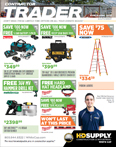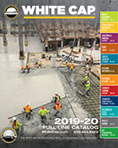Aerial Lift Safety Tips
The Ups and Downs of Aerial Lifts
Mobile employee lift equipment is common on all construction sites. Contractors have discovered how these units can help workers both increase efficiencies and enhance safety when properly used. To ensure these lifts are used correctly, contractors must develop safety procedures that highlight common concerns and focus on important differences.
Aerial Lifts vs. Scissor Lifts
The first important lesson is the proper identification of employee lifting devices used in the industry. It can be confusing for employers. A common global industry term for this equipment is mobile elevating work platforms (MEWPs). But OSHA has its own approach to this equipment. Their interpretation of the safe operation of the units are subject to several OSHA Standards including :29 CFR 1910.67, 29 CFR 1910.269(p), 29 CFR 1926.21, 29 CFR 1926.453, 29 CFR 1926.502. These rules split MEWPs into two classifications.
SCISSOR
OSHA defines a scissor lift as a mobile scaffold for which the platform only moves vertically, limiting its uses. This equipment features a wide platform supported by cross-brace supports. The platform moves straight up and down, and thus it must be placed directly beneath the work area.
AERIAL
The agency then defines an aerial lift as any vehicle-mounted work platform that can move vertically and/or horizontally. This classification includes: extendable boom platforms, aerial ladders, articulating (jointed) boom platforms, vertical towers, and any combination of the above. OSHA regulation covers aerial lifts that are both powered and manually operated. OSHA regulations offer no distinction between aerial lifts that can rotate around a primarily vertical axis, and those that do not.
The use of both scissor and aerial lifts inherently presents fall hazards to workers. OSHA states that aerial lifts are to be used to lift workers to difficult work positions that aren’t accessible by other equipment, even scissor lifts. This is also why OSHA views aerial lifts as extremely hazardous, resulting in additional regulations – especially around fall protection.
![]() Personal Fall Protection
Personal Fall Protection
OSHA has addressed the use of personal fall protection on scissor and aerials lifts in several letters of information, and recognizes that the design and function of a scissor lift is different from that of an aerial lift, thus posing varying degrees of risk for falls.
Fall protection for scissor lifts
The agency states that if the scissor lift has guardrails that meet OSHA requirements, then this is all that is required for fall protection. Workers do not have to be tied-off. The guardrails themselves serve as the necessary fall protection.
Fall protection for aerial lifts is a different story.
OSHA’s general industry aerial lift standard at 1910.67(c)(2)(v) requires that a body belt be worn and a lanyard attached to the boom or basket at all times to prevent an employee from falling out, or being bounced out of the aerial lift. Body belts are only allowed for fall restraint and fall positioning systems as a means of fall prevention. A full body harness is required for fall protection.
OSHA requires fall protection at four feet above a lower level at 1910.23(c). A worker may enter or exit an aerial lift (at heights above four feet) provided that fall protection such as guardrails or a fall arrest system is used while the worker moves between the lift and the working surface.
Common Safety Concerns
While there may be differences in the rules for protection, OSHA recognized that workers using MEWPs are exposed to several common hazards. When these conditions are not recognized, accidents can occur including personal injury, equipment damage, and death.
Based on OSHA accident reports, the major causes of fatalities are falls, electrocutions, and collapses or tip-overs.
The hazards that create these conditions include unsecured operators falling from aerial lifts, objects falling from lifts striking workers below, tip-overs, ejections from the lift platform, contact with objects including power lines, and entanglement with nearby equipment.
Hazardous conditions can be prevented with a thorough pre-use survey prior to each use. Jobsite conditions can change quickly, and with the expanded use of aerial work platforms, there needs to be as much concern for the safety of nearby workers as the operator.
Proper Training
While MEWPS look easy to use, employers must take measures to ensure the safe use of aerial lifts by their workers. The first step is to review the manufacturer’s safety requirements. While most equipment is similar in operation and controls, there can be differences. Contractors should only allow trained and authorized persons to operate a MEWP, ensuring the employee is familiar with that manufacturer and style.
The contractor’s training program should include:
- Explanations of electrical, fall, and falling object hazards
- Procedures for dealing with hazards
- Recognizing and avoiding unsafe conditions in the work setting
- Instructions for correct operation of the lift (including maximum intended load and load capacity)
- Demonstrations of the skills and knowledge needed to operate an aerial lift before operating it on the job
- When and how to perform inspections
- Manufacturer’s requirements
Many aerial lift manufacturers offer comprehensive training programs for aerial lift safety, including online and in-person documented activities. Some training modules even include simulators that allow operators to experience common construction site conditions.
Another useful training resource is the International Powered Access Federation (IPAF). This organization promotes the safe and effective use of powered access equipment worldwide. IPAF offers technical advice and information through safety initiatives and training programs. IPAF is very active in the United States with approved training sites located across the country.
Promoting Aerial Lift Safety
IPAF has developed a 2018-2019 safety campaign that focuses on the importance of ground safety when using MEWPs. Their training material includes posters and training videos that are free to contractors.
The campaign focuses on reducing five common risky practices that occur in preparation of a work activity. Operators should:
- Plan the positioning of the equipment so as to not overreach or lean out of the platform or climb on guardrails to perform their tasks. They should not disable the safety controls, such as tying gates open.
- Anticipate how to properly enter and leave work platforms. Most equipment requires that access positions be at ground level or on the MEWP chassis. An important element of this practice is a formal emergency plan that documents rescue methods.
- Avoid positioning equipment in proximity to moving machinery or alongside vehicular traffic. It’s a good idea to have extra safety barriers on hand with which to outline the work area.
- Inspect the equipment prior to each use by a competent person with adequate training and experience on that type of MEWP.
- Assess ground condition in the work area.
Assessing Ground Conditions
All MEWPs rely on the condition of the ground on which they stand for their stability. Unconsolidated soil conditions may settle under the equipment’s weight causing the machine to become out of level and unstable. Operators should inspect ground conditions before unloading units from trailers, traveling to the work area, and setting up.
Many accidents occur during the set-up process. Moving from hard ground to soft may cause the machine to go out of level and overturn.
Ground conditions should also be considered when moving stowed MEWPs, as soft ground conditions may result in the machine becoming bogged down with consequent recovery costs, delays, and loss of production.
During operation, monitor the level indicators provided on platforms and take note of any warnings. If the level indicator warns that acceptable operating limits have been exceeded, the operator should lower the unit and reset the machine to a level position. If you suspected that the outriggers could sink for any reason, regular checks should be made on the machine level monitor and adjustments made to outriggers, spreaders, mats, etc. To help avoid uneven set-ups, IPAF offers an online spreader pad calculator (pads.ipaf.org).
By incorporating these safe practices in your work activities, you and your crew can avoid accidents.
Preshift Equipment Inspections
The IPAF has posted a free Mobile Elevating Work Platform (MEWP) Pre-Use Inspection Checklist. This is a useful document and should be combined with a manufacturer’s checklist.
IPAF MEWP Pre-Use Inspection Checklist (0316 EN) (91.74KB)
![]()
For more info on using Aerial Lifts in construction check out these links:
OSHA’s guide: Working With Scissor Lifts

 Personal Fall Protection
Personal Fall Protection



